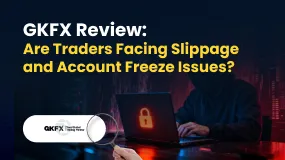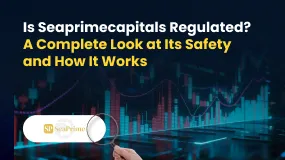简体中文
繁體中文
English
Pусский
日本語
ภาษาไทย
Tiếng Việt
Bahasa Indonesia
Español
हिन्दी
Filippiiniläinen
Français
Deutsch
Português
Türkçe
한국어
العربية
How to Identify and Avoid Pump-and-Dump Schemes in Online Trading
Abstract:Learn how to identify and avoid pump-and-dump schemes in online trading. This article provides a detailed guide to recognizing and protecting against these fraudulent practices.

Pump-and-dump schemes are a kind of fraud in which individuals or organizations intentionally raise the price of stocks they possess. They then sell it at the top, leaving new investors with substantial losses. This article investigates how these schemes work and how investors might defend themselves from fraud.
Understanding Pump-and-Dump Schemes
Pump-and-dump tactics were prevalent long before cryptocurrency. They began in the stock market. These strategies entail picking a low-liquid, low-cost asset and artificially raising its price via disseminating misleading information. This causes a purchasing frenzy. When the price reaches a high, the culprits sell their stock at the inflated price. This leads the stock price to plummet, leaving new investors with worthless shares.
The Pump-and-Dump Scheme's Mechanism
Historically, pump-and-dump tactics were carried out via cold phoning. The approaches have developed since the internet's inception. The method consists of two major stages:
· Pump: Fraudsters broadcast false or misleading information, frequently claiming insider knowledge, to persuade others to acquire shares. This disinformation generates fake demand, which drives up the stock price.
· Dump: Once the price has increased enough, the fraudsters sell their stock at the inflated price. As they sell, the increasing supply leads the price to fall, leaving prospective purchasers with substantial losses.

Small-cap stocks are especially susceptible to such schemes. Their prices are readily altered with a tiny bit of trading activity. The sudden flood of new purchasers might drastically raise the price. This enables the fraudsters to sell their shares before the price plummets profitably.
Identifying Pump-and-Dump Schemes
To avoid pump-and-dump schemes, investors should use a methodical approach to recognizing such scams:
· Treat Unsolicited Investment Offers with Suspicion: Be careful of investment proposals sent by unsolicited email, social media message, or remark. These communications are often sent by unknown individuals or in response to disinformation.
· Watch for Warning Signs: Promises of extraordinarily large profits, pressure to move immediately on an alleged opportunity, and assertions that the advice is based on proprietary or insider knowledge are all red flags of a pump-and-dump scam.
· Examine Advertisements: Consider including disclaimers when content providers on sites such as YouTube, Twitter, and Instagram mention certain stocks. Disclaimers may vary from no disclosure (fraudulent), imprecise disclosure (when remuneration is not explicitly indicated), and buried disclosures (hidden in tiny print). These techniques are common and should be treated with care.
· Conduct Thorough Homework: Before making any investment, do your homework. If you need more time or experience, consider employing mutual funds or other professional investing services. Avoid making judgments based on rumors or unwanted advice.
Pump-and-Dump Schemes
Pump-and-dump strategies may take several forms, each with its tactics:

· Classic Pump and Dump: This old strategy artificially inflates a stock's price via phone calls, phony news releases, and the sharing of alleged insider information.
· Boiler Room: In this scenario, a tiny brokerage business uses high-pressure sales methods and cold calling to sell as many shares as possible, raising the price. The brokers benefit from their holdings when the price reaches a certain level.
· Wrong Number Scheme: Scammers may claim to have dialed the wrong number to promote a particular stock and create interest.
Real-Life Examples of Pump-and-Dump Schemes
Consider the example of two investors, Luke and Lucas. Lucas buys 1,000 shares of a firm for $5 apiece and distributes false information about the company's imminent success. As a consequence, the stock price climbs to $30. Luke buys 1,000 shares at $30 apiece after seeing the price grow. Lucas then sells his shares at the top price, netting a significant profit. As the misleading information is disproven, the stock price plummets to $5, leaving Luke with substantial losses.
Avoiding Crypto Pumps and Dumps.
Pump-and-dump strategies also affect cryptocurrency investors. To prevent being victimized:
· Check listings: Check sure the coin is listed on key cryptocurrency exchanges and platforms, such as CoinMarketCap, which run checks to rule out obvious fraud.
· Analyze Startups: Consider the validity of the price rise. Actual developments or news about the company usually indicate a genuine increase.
· Study price charts: Look for continuity with the overall market trend. A significant increase without supporting news is a red indicator.
· Avoid Penny Stocks: Be wary of low-value currencies and young enterprises since they are more vulnerable to manipulation.
· Beware of Fake Startups: Scammers may promote non-existent or poorly supported projects. Check the project's technology model and development plan.
Conclusion
Pump-and-dump tactics take advantage of investor excitement and disinformation to manipulate stock prices for false gains. Investors should learn how these scams operate and look for warning indications. Conducting careful research and skepticism of unsolicited counsel are critical techniques for avoiding these fraudulent scams. Whether investing in regular equities or cryptocurrency, due investigation and skepticism are the strongest defenses against pump-and-dump frauds.

Disclaimer:
The views in this article only represent the author's personal views, and do not constitute investment advice on this platform. This platform does not guarantee the accuracy, completeness and timeliness of the information in the article, and will not be liable for any loss caused by the use of or reliance on the information in the article.
Read more

Close Up With WikiFX —— Take A Close Look At Amillex
With the rapid growth of global multi-asset investment markets, the differences among regional forex markets have become increasingly significant. As a forex broker information service platform operating in more than 180 countries and regions, WikiFX is dedicated to helping investors in every market identify reliable brokers. Therefore, we have launched an exclusive interview series —— "Close Up With WikiFX", offering in-depth conversations with local brokers. This series aims to dive deep into frontline markets and provide first-hand information, helping investors gain a clearer and more comprehensive understanding of quality brokers.

Seacrest Markets Exposed: Are You Facing Payout Denials and Spread Issues with This Prop Firm?
Seacrest Markets has garnered wrath from traders owing to a variety of reasons, including payout denials for traders winning trading challenges, high slippage causing losses, the lack of response from the customer support official to address withdrawal issues, and more. Irritated by these trading inefficiencies, a lot of traders have given a negative review of Seacrest Markets prop firm. In this article, we have shared some of them. Take a look!

GKFX Review: Are Traders Facing Slippage and Account Freeze Issues?
Witnessing capital losses despite tall investment return assurances by GKFX officials? Do these officials sound too difficult for you to judge, whether they offer real or fake advice? Do you encounter slippage issues causing a profit reduction on the GKFX login? Is account freezing usual at GKFX? Does the United Kingdom-based forex broker prevent you from accessing withdrawals? You are not alone! In this GKFX review guide, we have shared the complaints. Take a look!

Is Seaprimecapitals Regulated? A Complete Look at Its Safety and How It Works
The straightforward answer to this important question is no. Seaprimecapitals works as a broker without proper regulation. This fact is the most important thing any trader needs to know, because it creates serious risks for your capital and how safely the company operates. While this broker offers some good features, like the popular MetaTrader 5 platform and a low starting deposit, these benefits cannot make up for the major risks that come from having no real financial supervision. This article will give you a detailed, fact-based look at Seaprimecapitals regulation, what the company claims to do, the services it provides, and the clear differences between official information and user reviews. Our purpose is to give you the information you need to make a smart decision about the risks and benefits of working with this company.
WikiFX Broker
Latest News
Interactive Brokers Expands Access to Taipei Exchange
Simulated Trading Competition Experience Sharing
WinproFx Regulation: A Complete Guide to Its Licensing and Safety for Traders
Axi Review: A Data-Driven Analysis for Experienced Traders
INZO Regulation and Risk Assessment: A Data-Driven Analysis for Traders
Pepperstone CEO: “Taking Down Scam Sites Almost Every Day” Becomes “Depressing Daily Business”
The CMIA Capital Partners Scam That Cost a Remisier Almost Half a Million
Is Seaprimecapitals Regulated? A Complete Look at Its Safety and How It Works
eToro Cash ISA Launch Shakes UK Savings Market
Cleveland Fed's Hammack supports keeping rates around current 'barely restrictive' level
Currency Calculator



